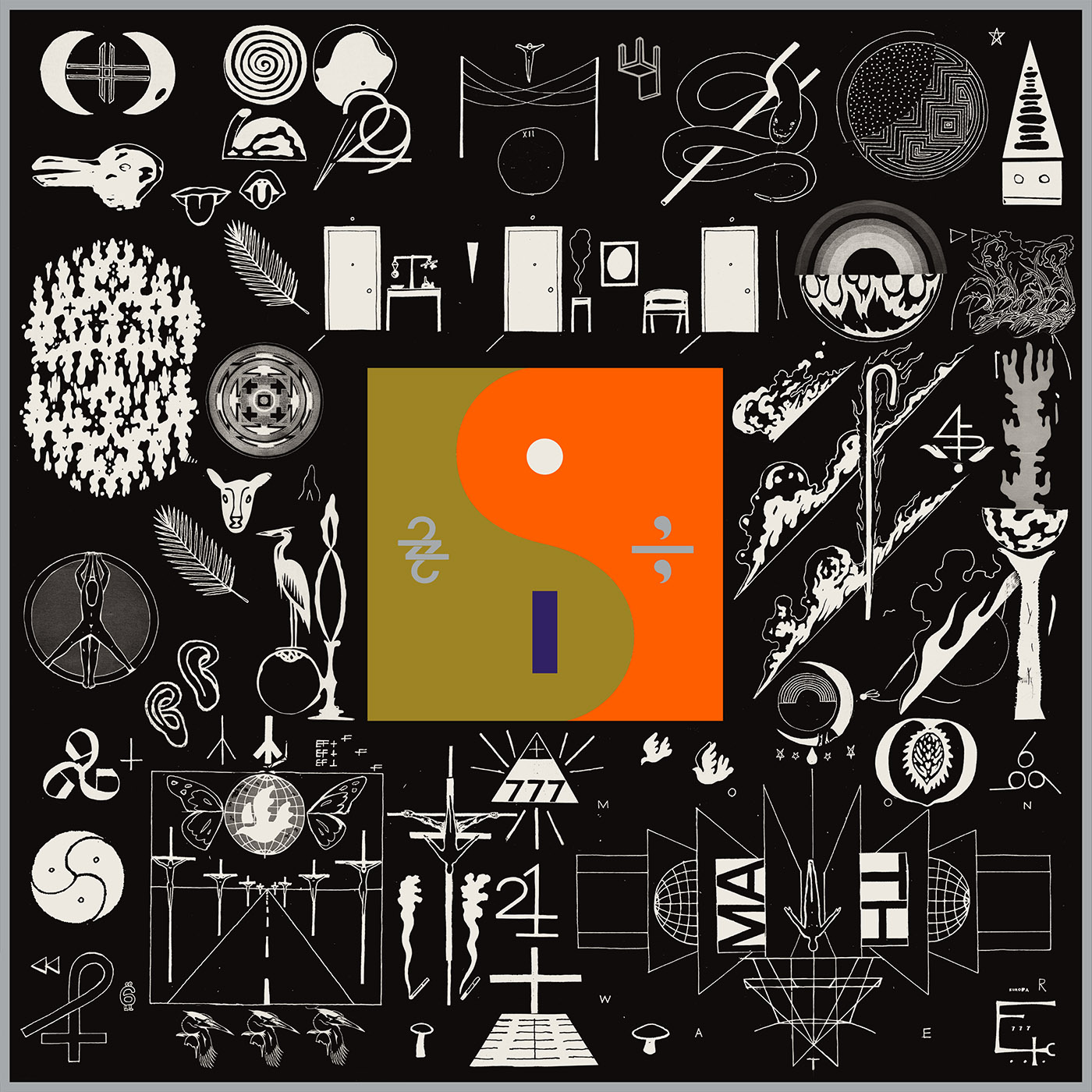The Return of Bon Iver Through the Eyes of a True Fan
Liam McConnell – ARTS EDITOR
Bon Iver has returned. September 30th—the long-awaited release date of their third album, 22, A Million—has arrived, and not a moment too soon for some particularly dedicated fans. “Particularly” is the operative word here. I’ve often noticed that Bon Iver is one of those acts that seems to garner a supremely dedicated following.
Some bands have a fairly large and dedicated underground fandom, but never manage to extend their fame across borders and boundaries: not so for the Gold record-selling Bon Iver. Some bands recruit a massive cult following only to be abandoned when they turn mainstream: not so for the Grammy-winning Bon Iver. Some bands suffer from the infamous “sophomore slump,” and release a comparatively weak second album after their creative juices have prematurely dried, perhaps the result of immense pressure to live up to their previous greatness while the eyes of the music world are suddenly upon them: not so for Bon Iver, who’s second album has earned universal acclaim. I sat down with Annelise U., one of the band’s most adoring fans, in order to understand exactly what makes a Bon Iver enthusiast tick.
Justin Vernon, an extremely prolific musician known primarily for fronting Bon Iver but who also releases music under his own name, with the band Volcano Choir, and more, had led his fans to believe that Bon Iver was, for all intents and purposes, dead. He cited a lack of motivation as the cause of the demise of the beloved band, saying that he had mentally left the Bon Iver headspace. True fans like Annelise were rocked by the news, but never let go of the hope that one day, he’d feel inspired by the Bon Iver name once again. In the meantime, they contented themselves with releases by Volcano Choir, guest spots on Kanye West and Jay-Z songs, and other sundry projects and collaborations.
Annelise’s fandom is one of immense respect of Vernon’s artistry. She often speaks of his simple, unpretentious adoration of music. “He’s just the artist that I find to be the most musically curious,” she says, referring to his collaborative versatility. He’s had a hand in producing music in genres ranging from indie-folk and soft rock to hip-hop and dubstep to jazz and bluesy soul. As Annelise moved to Toronto from the west coast, she planned her route around a stop in Eau Claire, Wisconsin, Vernon’s hometown. She roamed the city for a short while, listening to some Vernon projects and pondering the city’s ongoing influence on the music she had grown to love so dearly.
Annelise was on pins and needles on the new album’s release day, counting the minutes until she could leave work and rush home to find the album, already delivered and waiting. After all, this was a day she had waited for for exactly 5 years, 3 months, and two weeks without even knowing if it would arrive at all. (Their last album—the Grammy winning Bon Iver, Bon Iver—was released in in June of 2011.) Reportedly, she waxed poetic about the band’s importance as she ate dinner with her bewildered boyfriend, admiring the unique cover of the new vinyl record and building anticipation until the moment of truth.
After dinner, she poured herself a glass of wine, loaded the album onto her turntable, let the needle drop, and gathered herself to be submerged in the musical lagoon that she felt as if Justin Vernon had dug and filled especially for her. This was in the neighbourhood of 9:00 PM. By 1:00 AM, she had listened to the album six times. Luckily, she says, she woke up the next morning to a day off of work. She listened another ten times before noon. She was hooked. She had dove into her auditory lagoon sixteen times thus far and, like a lucky treasure hunter, came up each time with a new prize. Thus is the complexity of Vernon’s music, she says. It requires many, many excursions to receive the fullest of effects.
“Did you like the album on your first listen?” I asked, “Or did you like it more after you’d listened a few times?”
“Both,” was her concise reply. “There’s just so much going on, you need to listen a few times before you really hear everything.” We then indulged ourselves by snobbishly listing the merits of artistically or lyrically complex music, especially when compared to the state of modern pop. It can be refreshing to hear an artist put serious effort into creating a work of merit in an era when we have two pop songs getting heavy radio rotation whose choruses both feature the word “work” repeated between 15 and 29 times (no offense to Rihanna or Fifth Harmony; throw no shade and none shall be thrown at ye). But I digress.
The genuine admiration Annelise feels for Bon Iver and other Vernon projects is, like the man himself, unpretentious, curious, dedicated, and inspiring. It made me think of creators that I feel an equal adoration for, and reflect on the things they’ve created and why I love them. What do you love? What is it that you can talk about for hours, maybe boring your friends but not caring? Is it the fashion design of Jason Wu? The athleticism of José Bautista? The art of Frida Kahlo? Heck, even the music of Fifth Harmony?
On Annelise’s glowing recommendation, and in an effort to understand the music that has become a veritable phenomenon, I sat down to listen to 22, A Million myself. Here’s what I found.
The album opens on “22 (OVER S∞∞N)” with Vernon’s falsetto voice, sustaining a note, played on repeat like an alarm. Rather than alarm the listener, though, it lulls them. The album’s expert integration of samples begins straight away, in this case with Mahalia Jackson’s heavily edited croon. The saxophone of Michael Lewis interjects, not breaking the serenity but adding to it.
It is broken, though, when the comparatively harsh second track, “10 d E A T h b R E a s T ⚄ ⚄” begins. A plodding bass and drum line compliment Vernon’s robotically edited voice. The bleeding of speakers is intentional, but makes the listener glance to their speaker’s health. The album has begun with a bang.
The Messina, a digital instrument specially invented for use on this album, makes its first appearance in “715 – CRΣΣKS” The voice recorded through the Messina makes a sound reminiscent of a talk-box, but with an unrivalled complexity. Vernon sounds as if he is singing a harmony with several versions of himself, ranging from the enormous to the minuscule.
Jagjaguwar label-mate Sharon Van Etten’s gorgeous, smoky voice makes an appearance in “33 ‘GOD,’” edited to be unrecognizable but nevertheless complimentary. It plays baritone to Vernon’s ever-present falsetto.
Bon Iver’s retired folksy sound makes a slight resurgence in the particularly beautiful and symmetrical “29 #Strafford APTS,” bringing the listener back to the For Emma, Forever Ago days of Bon Iver’s infancy.
The melody of “666 ʇ” is the kind to evoke a powerful pathos response in the listener, the type to make one reflect on those loved and lost long ago. A calculating, electronic backbeat soundtracks any emotional fallout that may, and probably will, occur.
“The math ahead: the math behind it… It’s moon water,” so Vernon tells us on “21 M♢♢N WATER.” A steadily growing electronic wall of sound builds behind him, cut again by the travelling saxophone of Lewis. As if suffering a malware attack, the sound electronically degenerates until the most beautiful and soothing synthesizer line takes over in “8 (circle).” Perhaps the most lyrically dexterous song, Vernon spins a yarn that resists unequivocal interpretation.
The Messina is present throughout, but it makes its second high-profile appearance in “____45_____,” creating the auditory illusion of a saxophone orchestra of one. Instrumentation and electronic manipulation meet as equals, and combine like lovers.
As soon as it began, the very short album ends with “00000 Million.” A sample of Fionn Regan’s “Abacus” sings a duet with Vernon, complimenting the song as if he reached back in time to request it. “It harms me, it harms me, it harms me, I’ll let it in,” are the work’s closing notes. A deceptively surreptitious sadness that has been approaching the listener for the last 34 minutes finally reaches and claims its victim. But it is a welcome sadness, brought upon the realization that real beauty can and does exist in our world, if it is unlocked by the skilled hands of a gifted craftsperson.
22, A Million is available now through Jagjaguwar at your local record store.




